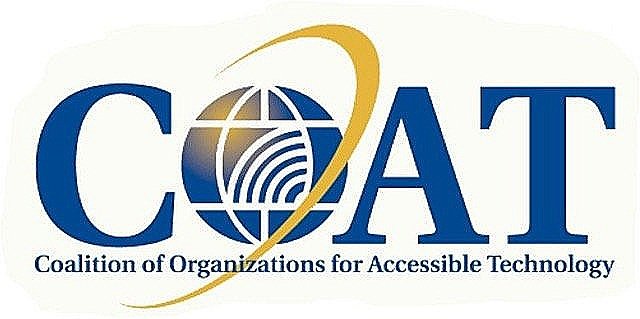
The Communications, Video and Technology Accessibility Act
Click to download and read the full CVTA!
Click to read the press release
Welcome to CVTA
The Communications Video and Technology Act (CVTA) ensures people with disabilities have equitable access to evolving digital communications and video programming services. To achieve this, the legislation will expand the authority of the Federal Communications Commission (FCC) to require full access to TV and streaming programs through closed captioning and audio description, close gaps in the provision of 911 emergency services, bring telecommunications relay services in line with modern technologies, and ensure that evolving technology-driven communications empower people with disabilities to communicate effectively in all aspects of their lives. Efforts to achieve passage of the CVTA are being driven by the Coalition of Organizations for Accessible Technology, which is reuniting to ensure technology continues to be usable and accessible for everyone.
-
Since Congress enacted the Twenty-First Century Communications and Video Accessibility Act (CVAA) in 2010, accessibility requirements for people with disabilities have not kept pace with changing technologies. As a result, people with disabilities do not have equitable access to many essential communication and video products and services. The COVID-19 pandemic exacerbated these accessibility gaps for people with disabilities as online platforms and services became increasingly essential. The CVTA will ensure that people with disabilities have full access to the range of mainstream communication products and services that are necessary to participate equitably in professional, educational, recreational, and civic contexts and will lay a foundation for access to future technologies.
-
Companies should maintain a culture of accessibility throughout the planning of their products and services. This principle of inclusion calls upon businesses to incorporate accessible features into their products and services early on in their design processes, to meet the needs of people with disabilities as these offerings are made available to the general public. This will ensure that people with disabilities receive equitable treatment, and avoid expensive, less effective retrofits for the companies at a later point in time. In addition to the societal benefits accruing from such cultural accessibility, businesses that make their products and services accessible in this manner can expand their markets to tens of millions of Americans with disabilities. Efforts to include these communities contributes to an enterprise’s success through enhanced customer loyalty and satisfaction. Companies with effective accessibility practices significantly increase their revenues and profit margins.
-
Providing access to evolving digital technologies breaks down barriers and enhances the ability of people with disabilities to be independent, productive, and socially connected. When able to fully integrate in society, people with disabilities have greater opportunities to participate in, and therefore make contributions to, our workplaces, schools, civic affairs, neighborhood activities, and more.
-
Item description
Become a Supporter!
Take Action: Support CVTA and List Your Organization Today!
Fill out the form below to join these organizations in supporting the CVTA!
We’re on a mission to make video programming, digital communications, and emergency services fully accessible to people with disabilities.
In the United States, there are currently about 56.7 million Americans with a disability, according to the Census Bureau. However, many modern digital technologies, including online video programming, TV user interfaces, emergency services, and video conferencing remain inaccessible for people with disabilities. Today’s technology is impressive, but as it continues to evolve, access for people with disabilities is threatened. We are on a mission to ensure that today’s and tomorrow’s digital technologies provide people with disabilities with an equitable experience.
“Since I authored the CVAA of 2010, technologies have changed. What hasn’t changed is our obligation to make sure that everyone – including people with disabilities – has equal access to the services and technologies they need to thrive. That is why I am introducing the Communications, Video and Technology Accessibility Act, to update current laws on the books so that we can meet the technological moment and ensure opportunity, independence, and equal access for all.”
— Senator Ed Markey
“I am proud to introduce legislation with Senator Markey to update current laws so people with disabilities have full access to modern technology that is necessary to participate equally in the 21st century.”
- Representative Anna Eshoo
